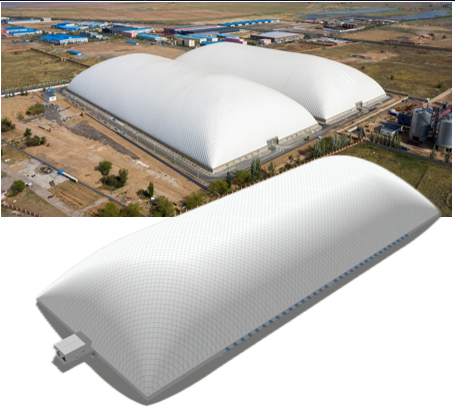News
Broadwell Air Dome
 Site
/uploads/image/677267645dfcf.png
Site
/uploads/image/677267645dfcf.png
Exploring Temporary Sports Structures: Benefits, Drawbacks, Costs, and Financing Options
Views: 2381
Author: Broadwell Air Dome
Publish Time: 2024-06-17
Origin: Site
Temporary sports structures are gaining traction as versatile solutions for various sports events and activities. These facilities offer unique benefits and come with their own set of challenges. In this article, we’ll dive into the advantages and disadvantages of temporary sports structures, break down their costs, and explore the financing options available to organizations considering these flexible facilities.
Benefits of Temporary Sports Structures
One of the key benefits of temporary sports structures is their flexibility. These buildings can be quickly assembled and disassembled, making them perfect for short-term events or seasonal sports activities. This flexibility allows organizers to set up facilities in diverse locations, tailored to the specific needs of different events, without the long-term commitment required by permanent structures. Furthermore, temporary structures can be customized for various sports, from tennis and basketball to swimming and gymnastics, providing a specialized environment that enhances the athlete's experience.
Another significant advantage is cost efficiency. Temporary sports structures, such as those offered by BroadwellDome, start as low as $30,000, making them a more affordable option than permanent facilities. The materials used, like modular panels and lightweight frames, reduce construction costs and time. Additionally, the option to rent these structures allows organizations to avoid the hefty upfront investment, making it a more accessible choice for smaller clubs or communities. This affordability extends to maintenance, as the temporary nature of these buildings often results in lower upkeep costs compared to traditional sports complexes.
Drawbacks of Temporary Sports Structures
Despite their many advantages, temporary sports structures do have some drawbacks. One major concern is durability. While these structures are designed to be robust, they may not withstand extreme weather conditions as effectively as permanent buildings. This limitation can pose significant risks, particularly in regions prone to harsh climates. Additionally, the lifespan of temporary buildings is generally shorter, meaning they may need to be replaced or refurbished more frequently, which could offset some of the initial cost savings.

Another potential drawback is the limited amenities. Permanent sports facilities often come equipped with advanced infrastructure, such as heating and cooling systems, locker rooms, and spectator seating. In contrast, temporary structures may lack some of these features, which can affect the overall experience for athletes and spectators. This limitation can be a significant consideration for high-profile events where a certain standard of comfort and convenience is expected.
Costs of Temporary Sports Structures
The cost of temporary sports structures can vary widely based on several factors, including the size of the structure, the materials used, and the level of customization required. Generally, these buildings are more cost-effective than permanent structures. For instance, BroadwellDome offers structures starting as low as $30,000, with prices increasing based on size and features. Factors such as location, duration of use, and additional features like climate control or specialized flooring can also influence the overall cost.
Additionally, renting a temporary sports structure can provide further cost savings. Rental prices are typically based on the duration of use, making it a flexible option for organizations that only need the facility for a limited time. This approach allows for better budget management and reduces the financial burden of long-term ownership. However, it is essential to consider potential additional costs, such as transportation, installation, and dismantling, which can add to the overall expenditure.
Financing Options for Temporary Sports Structures
Several financing options are available for organizations looking to invest in temporary sports structures. One common method is through leasing or rental agreements, which spread the cost over a specified period, making it more manageable for smaller budgets. Leasing also offers the advantage of including maintenance and service agreements, reducing the responsibility on the organization to handle repairs and upkeep.
Another option is securing sponsorships or partnerships. Many companies are willing to sponsor sports facilities in exchange for branding and advertising opportunities. This approach can significantly offset costs and provide additional funding for customization and enhancements. Additionally, grants and funding from government or sports organizations can be pursued, particularly for projects that aim to promote community sports and physical activity.
In conclusion, temporary sports structures offer a flexible and cost-effective solution for a wide range of sports events and activities. While they present certain challenges, such as durability and limited amenities, their benefits often outweigh these drawbacks, especially for short-term or seasonal use. Understanding the costs involved and exploring various financing options can help organizations make informed decisions and maximize the potential of these adaptable structures. Whether you’re a small community club or a large event organizer, temporary sports structures like those from BroadwellDome provide an affordable and customizable option to meet your needs.









